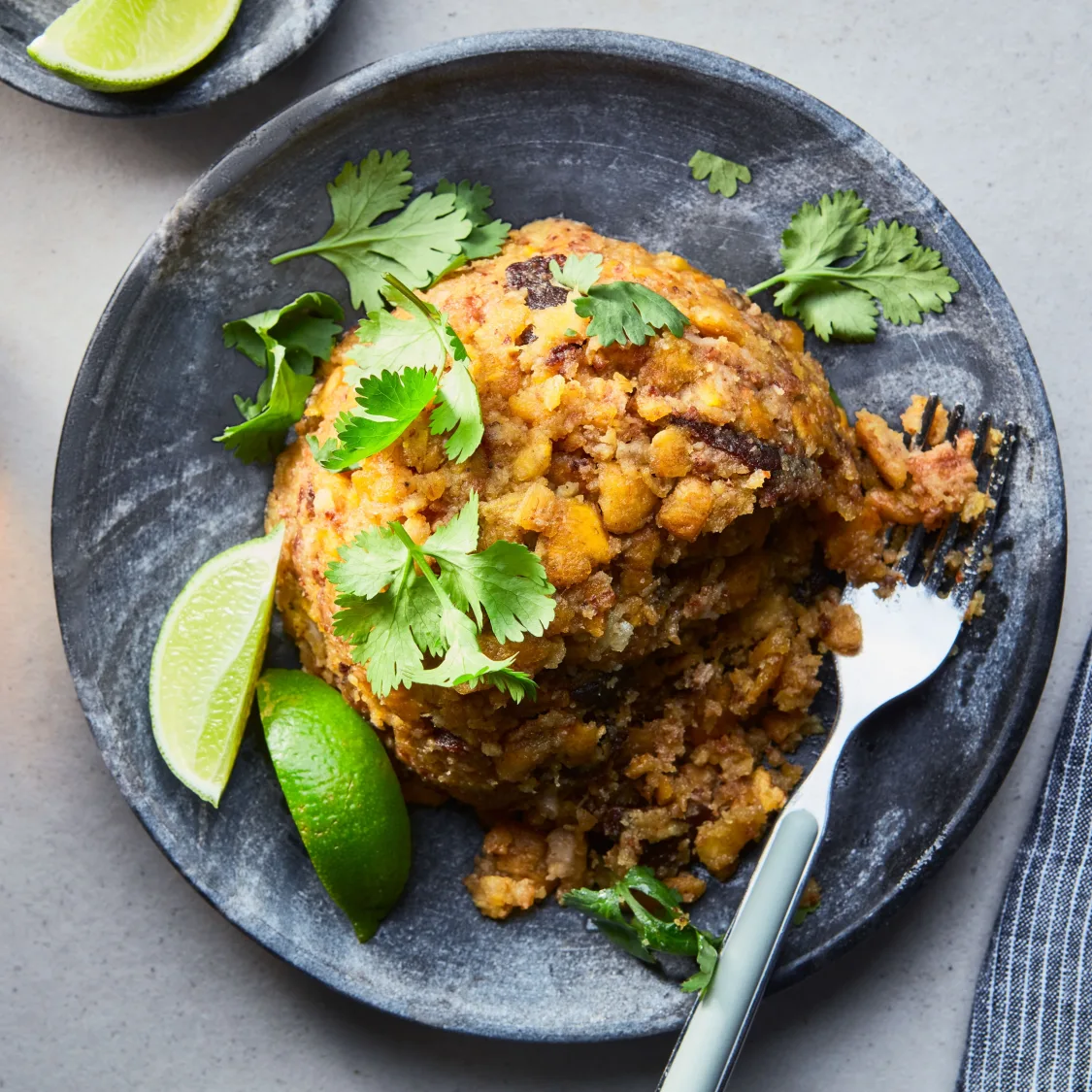
Mofongo
A hearty dish made from mashed green plantains with crispy pork rinds, garlic, and olive oil, often served with meat or seafood.
Ingredients
- •Green plantains
- •Pork rinds (chicharrones)
- •Garlic
- •Olive oil
- •Salt
- •Black pepper
- •Chicken broth
- •Pork fat or butter
Instructions
Fry Plantains
Peel and fry green plantains until cooked through
Crush Ingredients
Using a pilón, mash plantains with garlic, pork rinds, and seasonings
Shape
Form into dome shapes and serve with broth or sauce
Mofongo is a beloved dish in Dominican cuisine that showcases the versatility of green plantains. This hearty creation consists of fried green plantains that are mashed together with crispy pork rinds (chicharrones), plenty of garlic, and olive oil until they form a dense, flavorful mass that's typically shaped into a dome or ball.
While mofongo is also popular in Puerto Rico, the Dominican version has its own distinct character. The dish has African roots, specifically from the West African fufu - a starchy ball of mashed vegetables. When African culinary traditions met Caribbean ingredients, mofongo was born, with plantains replacing the traditional African yams or cassava.
Making mofongo is a labor of love that requires some muscle, particularly during the mashing process. The key to perfect mofongo lies in achieving the right texture - not too dense but not too loose. Traditionally, the ingredients are mashed in a wooden mortar and pestle called a pilón, which helps develop the perfect consistency while incorporating all the flavors. The garlic should be abundant, and the pork rinds should maintain some of their crunch even after being incorporated into the mixture.
While the classic version uses pork rinds, many variations exist. Some people make it with bacon instead of chicharrones, while others create seafood versions using shrimp or crab. Vegetarian adaptations replace the pork with extra garlic and olive oil. The dish is often served topped with or surrounded by a garlicky broth, braised meat, shrimp in creole sauce, or other flavorful accompaniments.
In Dominican restaurants and homes, mofongo is often served as a main course, with the mofongo dome creating a crater that's filled with sauce or broth. It's typically accompanied by a small bowl of extra garlic broth (caldo) on the side, which diners can add to moisten the dish to their liking. Some people enjoy it for lunch, while others consider it substantial enough for dinner.
From a nutritional perspective, mofongo is quite filling and energy-dense. The plantains provide resistant starch and fiber, while the pork rinds add protein. However, due to the frying process and added fats, it's quite caloric and might not be suitable for those watching their fat intake. The dish is naturally gluten-free but high in sodium, especially when served with additional sauce or broth. Those with heart conditions or on low-sodium diets might want to enjoy it in moderation.
